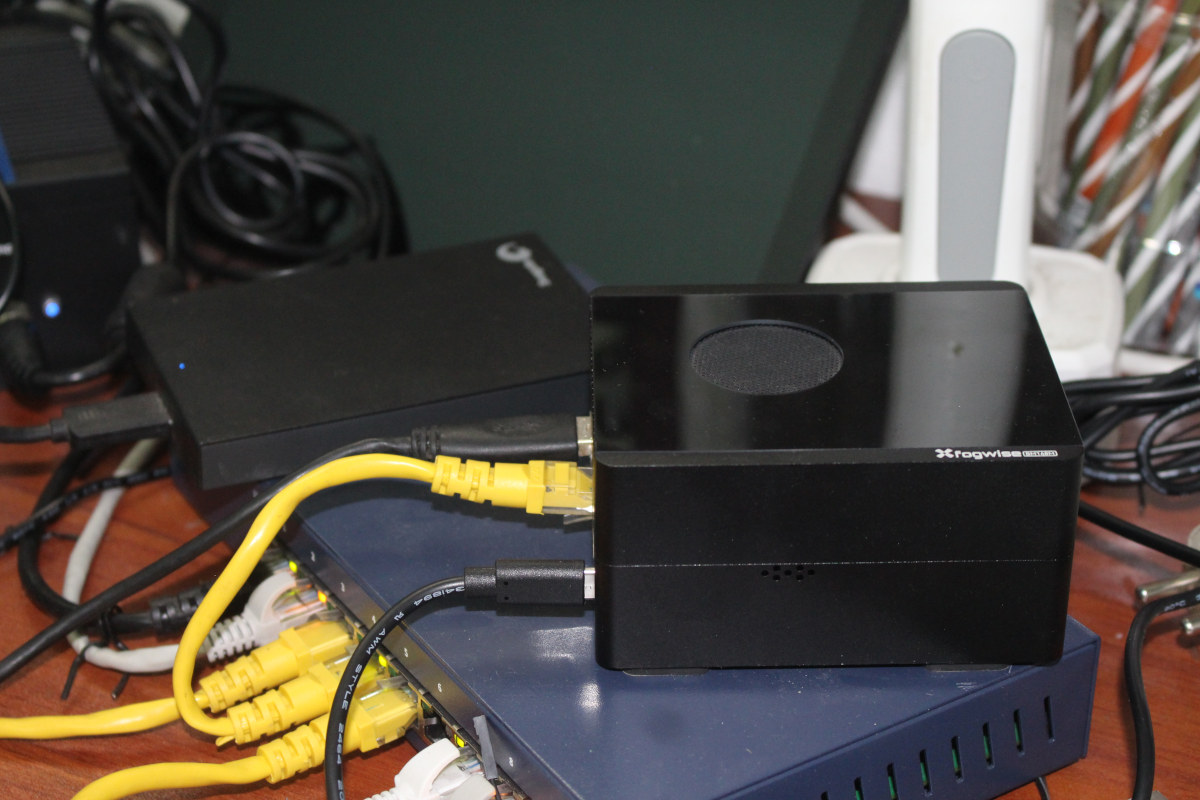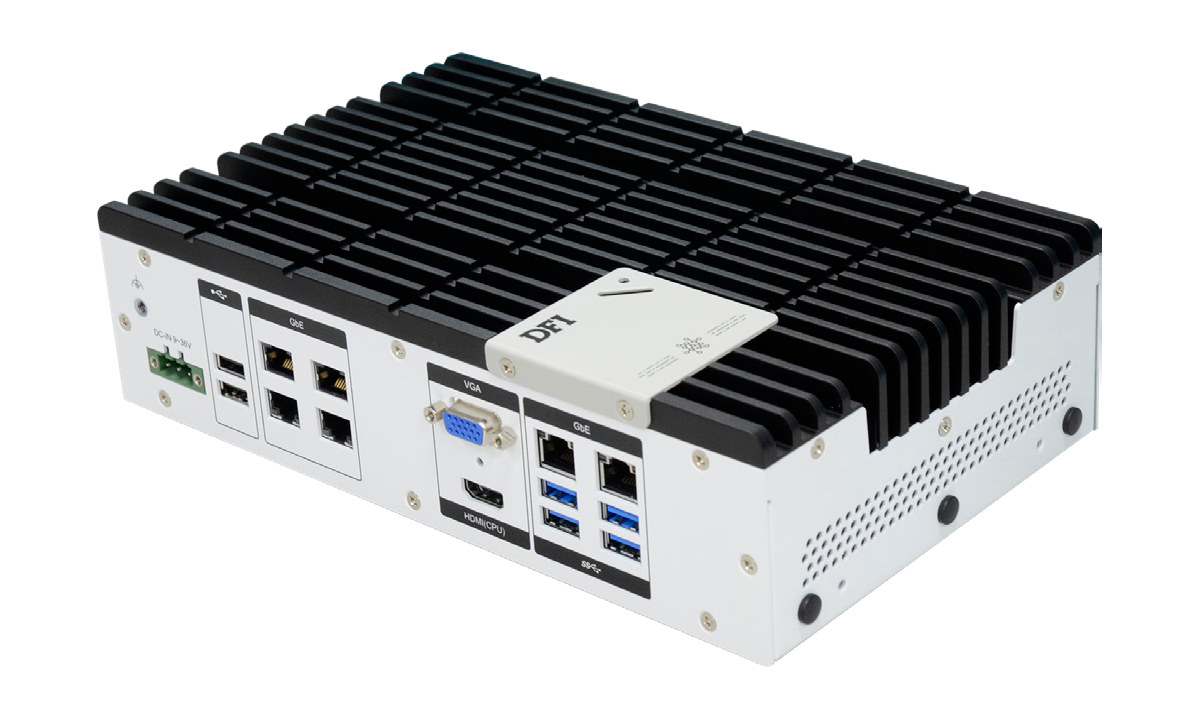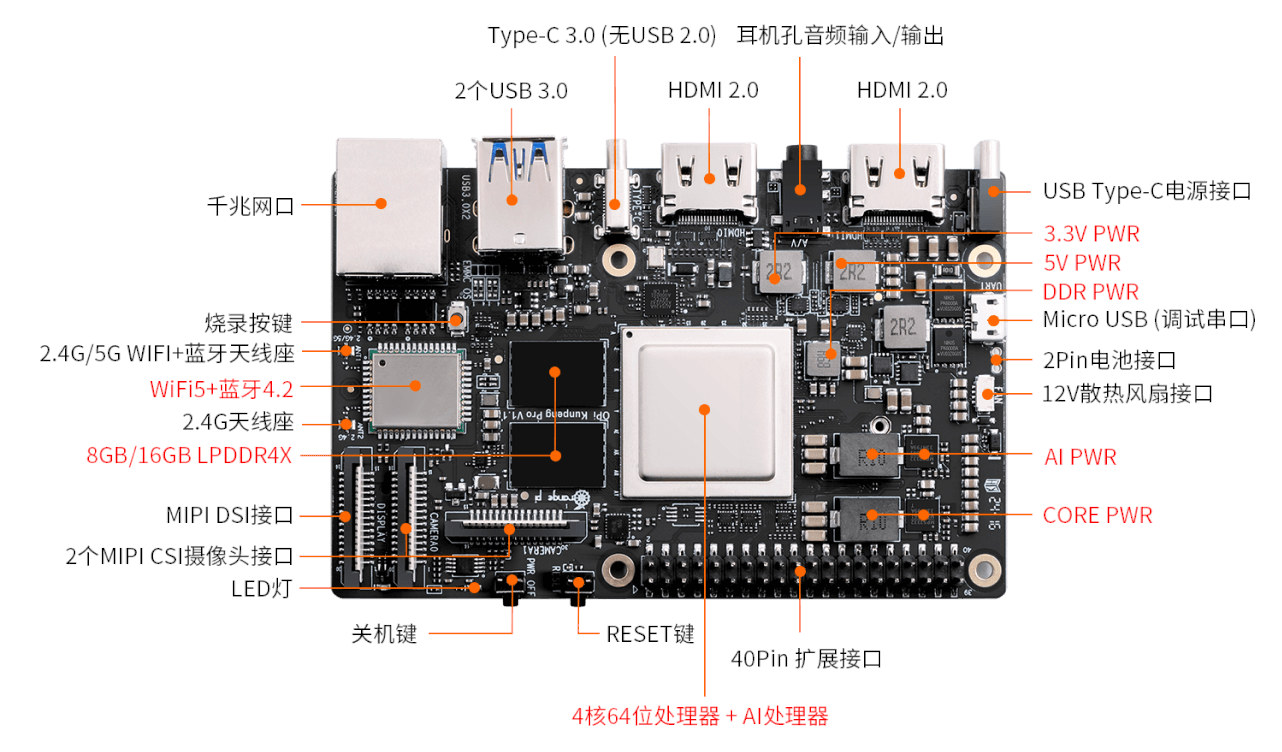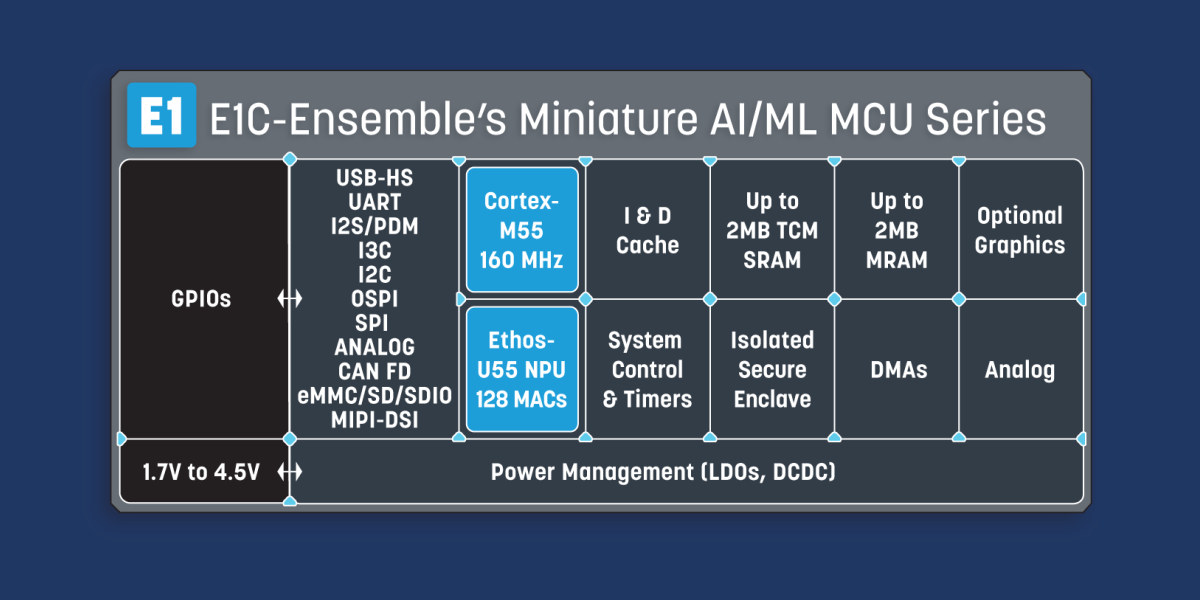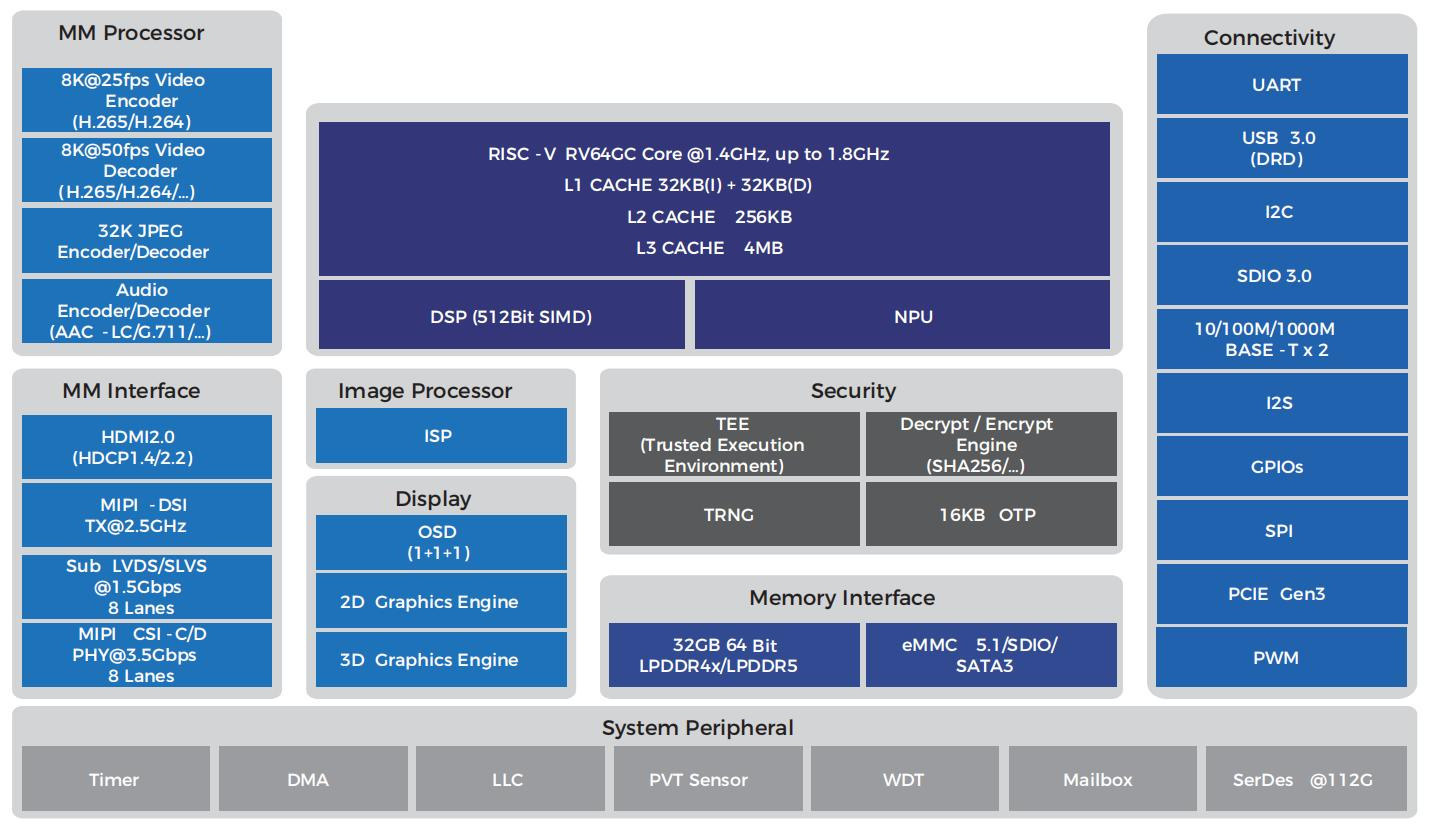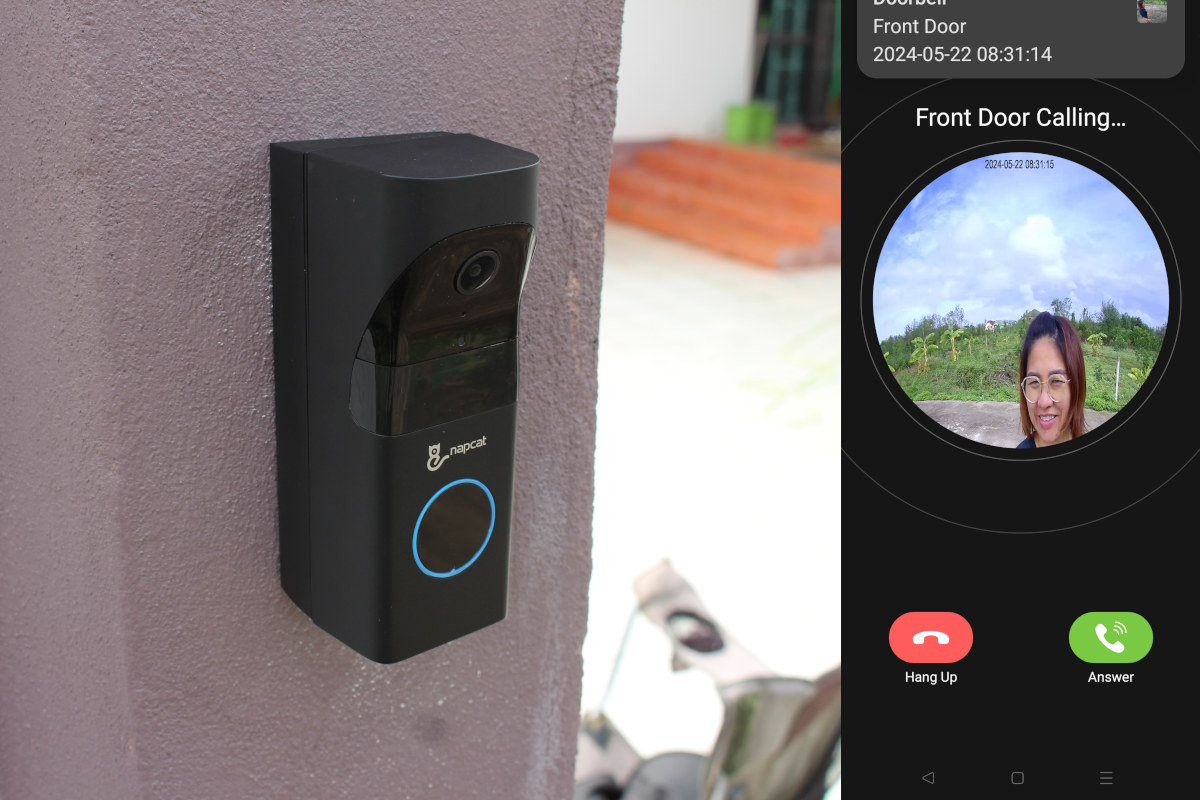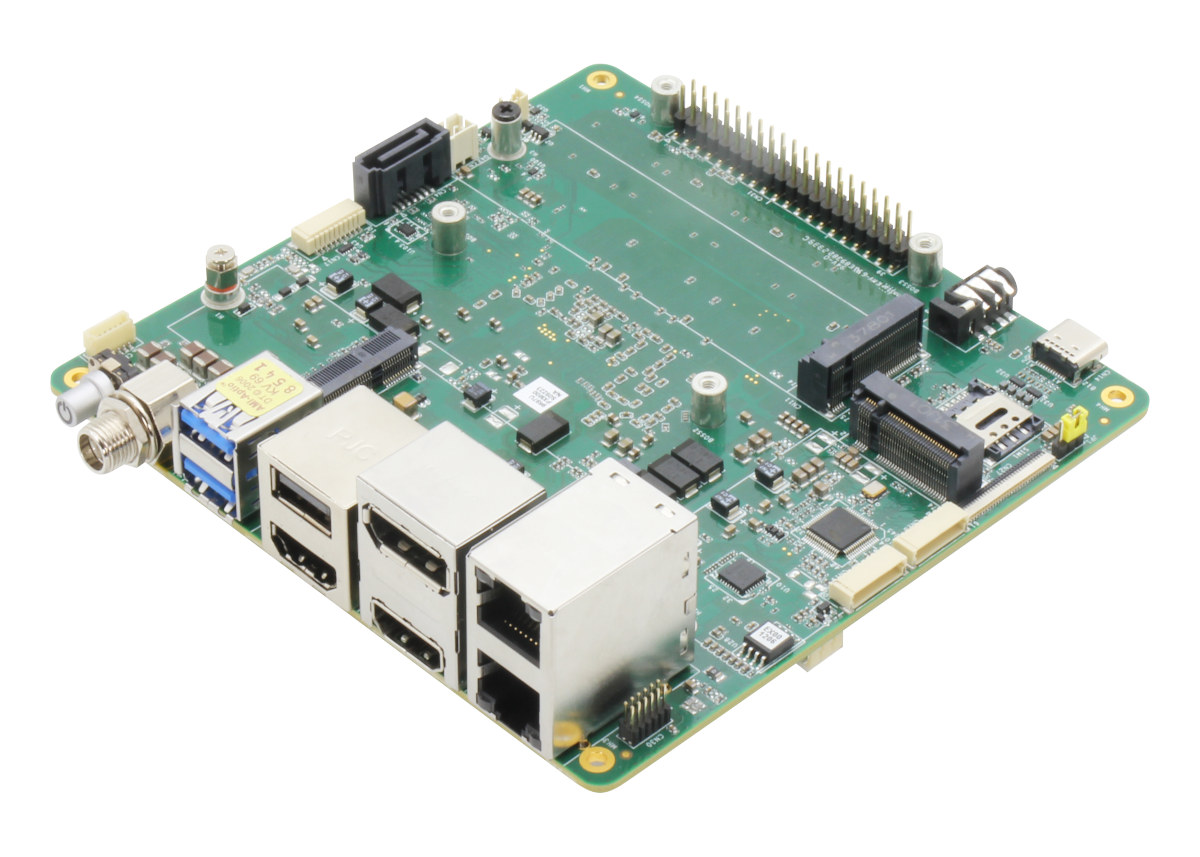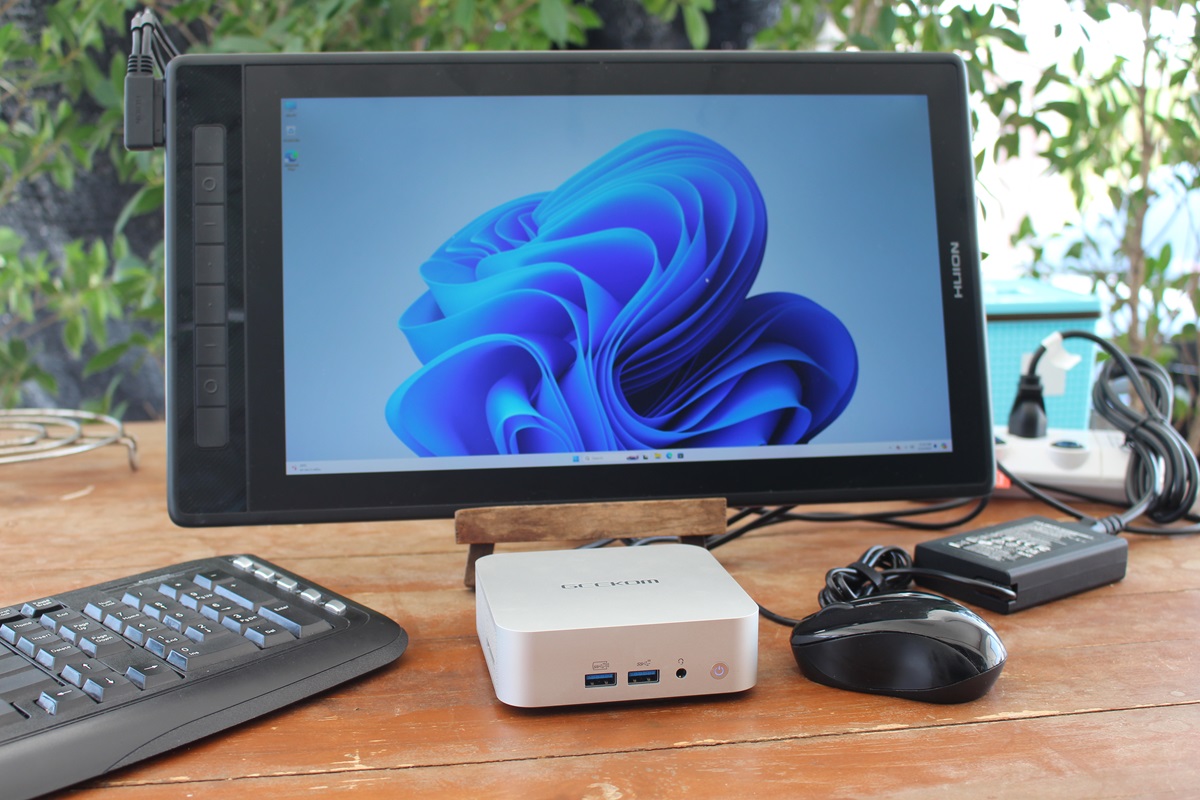After checking out Radxa Fogwise Airbox hardware in the first part of the review last month, I’ve now had time to test the SOPHGO SG2300x-powered AI box with an Ubuntu 20.04 Server image preloaded with CasaOS as well as Stable Diffusion and Llama3 containers. I’ll start the second part of the review by checking out the pre-installed Stable Diffusion text-to-image generator and Llama3 AI chatbot, then manually install imgSearch AI-powered image search engine in CasaOS web dashboard, test the Python SDK in the command line, and run some AI vision models, namely Resnet50 and YOLOv8. Radxa Fogwise Airbox OS installation Radxa only provided an Ubuntu Server 20.04 image last month with only the basics pre-installated. The company has now improved the documentation and also made two images available for the Radxa Fogwise Airbox: Base image (1.2GB) – Based on Ubuntu Server 20.04; contains only Sophon base SDK and backend. Full […]
DFI X6-MTH-ORN fanless Edge AI Box computer combines 14th Gen Intel Core Ultra SoC with NVIDIA Jetson Orin AI module
DFI X6-MTH-ORN is a fanless Edge AI Box Computer that combines an NVIDIA Jetson Orin NX/Nano AI module with a 14th Gen Intel Core Ultra “Meteor Lake-U” 15W processor for AI-driven applications leveraging GPU computing, machine learning, and image processing. It’s a fully modular computer with an Intel COM Express Type 6 or Type 10 module, an NVIDIA Jetson Orin module, and five M.2 sockets for expansion. The fanless embedded system takes up to 64GB DDR5 RAM, supports M.2 NVMe and 2.5-inch SATA storage, offers seven video outputs (3x HDMI, 3x DP+, VGA), and six Gigabit Ethernet ports. The X6-MTH-ORN is designed for industrial applications and environments with serial interfaces, wide 9V-36V DC input, and an extended -20°C to 60°C temperature range. DFI X6-MTH-ORN specifications: Meteor Lake-U SoC (one of the other) Intel Core Ultra 7 165U 12-core (2P+8E+2LPE) processor @ 1.7 / 4.9 GHz with 12MB cache, Intel 4Xe […]
Orange Pi KunPeng Pro SBC features a quad-core Huawei CPU with an 8 TOPS AI accelerator
Orange Pi KunPeng Pro is a single board computer powered by an unnamed KunPeng quad-core processor from Huawei that features an 8 TOPS NPU for AI workloads. It’s not the first time Orange Pi has launched an SBC based on a Huawei SoC, as the company introduced the Orange Pi AIPro last year with another unnamed Huawei Ascend SoC with a 20 TOPS NPU. The new Orange Pi KunPeng Pro board has basically the same layout as the AIPro model, but with lower specs overall, although it still comes with 8GB or 16GB LPDDR4x memory. Orange Pi KunPeng Pro specifications: SoC – Unnamed Huawei Kunpeng quad-core 64-bit SoC with unnamed GPU, 8 TOPS AI accelerator System Memory – 8GB or 16GB LPDDR4X Storage 32MB SPI flash connector for 32GB, 64GB, 128GB, or 256GB eMMC flash module MicroSD card slot M.2 2280 socket for SATA/NVMe drive Video Output 2x HDMI 2.0 […]
Alif Semi Ensemble E1C is an entry-level Cortex-M55 MCU with a 46 GOPS Ethos-U55 AI/ML accelerator
Alif Semi Ensemble E1C is an entry-level addition to the company’s Ensemble Cortex-A32M35 processors and microcontrollers with Ethos-U55 microNPUs that targets the very edge with a 160 MHz Cortex-M55 microcontroller and a 46 GOPS Ethos-U55 NPU. The Ensemble E1C is virtually the same as the E1 microcontroller but with less memory (2MB SRAM) and storage (up to 1.9MB non-volatile MRAM), and offered in more compact packages with 64, 90, or 120 pins as small as 3.9 x 3.9mm. Alif Semi Ensemble E1C specifications: CPU – Arm Cortex-M55 core up to 160 MHz with Helium Vector Processing Extension, 16KB Instruction and Data caches, Armv8.1-M ISA with Arm TrustZone; 4.37 CoreMark/MHz GPU – Optional D/AVE 2D Graphics Processing Unit MicroNPU – 1x Arm Ethos-U55 Neural Processing Unit with 128 MAC; up to 46 GOPS On-chip application memory Up to 1.9 MB MRAM Non-Volatile Memory Up to 2MB Zero Wait-State SRAM with optional […]
ESWIN EIC7700X quad-core RISC-V SoC embeds 19.95 TOPS NPU for Edge AI vision applications
Yesterday we noted Sipeed was working on the LM5A system-on-module powered by ESWIN EIC7700X quad-core RISC-V processor with a ~20 TOPS AI accelerator in order to integrate it into its Lichee Book laptop and other carrier boards. So today, I’ve decided to look into the EIC7700X SoC designed by “BEIJING ESWIN COMPUTING TECHNOLOGY CO., LTD”, or ESWIN for shorts. The EIC770X features four 64-bit RISC-V (RV64GC) cores clocked up to 1.8 GHz, an Imagination AXM-8-256 3D GPU, a 19.95 TOPS NPU, H.265/H.264 video encoder/decoder capable of handling up to 32x 1080p30 videos, various video output (HDMI + DSI) and input interfaces, dual GbE, 4-lane PCIe Gen 3, and more. ESWIN EIC7700X specifications: CPU 4x SiFive Performance P550 RV64GC RISC-V cores @ 1.4GHz (up to 1.8GHz) with Cortex-A75-class performance 32KB(I) + 32KB(D) L1 Cache 256KB L2 Cache 4MB shared L3 Cache Cache supports ECC (support SECDED) DNN Accelerator – 19.95 […]
NapCat Smart Video doorbell review – A battery-powered dual-band WiFi video doorbell with AI features
NapCat R112 is a 5MP video doorbell with dual-band 2.4/5GHz WiFi, AI features such as human and package detection, 2-way audio, and no subscription. It’s waterproof – rated IP65 – so it can be used outdoors, and powered by either a built-in battery or traditional wires. The company sent me a sample of the Napcat R112 for review. I’ll check out the camera in battery-powered mode only in this review, install it on the wall close to the gate of my house, and use the Napcast Android app to access the camera and answer calls. Napcat video doorbell unboxing The retail package shows a photo of the (white) base station and (black) camera and lists some of the main features such as a wide-angle camera, dual-power option, on-device human detection and package monitoring, and dual-band WiFi. There’s no monthly fee to pay to use the device after purchasing it. The […]
UP Xtreme i14 SBC offers Intel Core Ultra 5/7 Meteor Lake SoC, up to 64GB LPDDR5 for robotics and AIoT applications
AAEON has launched the UP Xtreme i14 SBC based on a choice of Intel Core Ultra 5/7 Meteor Lake SoCs, up to 64GB LPDDR5, M.2 PCIe sockets and a SATA port for storage, 2.5GbE and GbE interfaces, four 8K capable video output ports (HDMI, DP, and USB-C), a MIPI CSI camera interface, and more. The 14th Intel Core Ultra 5/7 SoC features up to 16 cores, Intel Arc graphics, and an Intel AI Boost NPU that deliver up to 32 TOPS combined and make the UP Xtreme i14 board especially suitable for applications such as Autonomous Mobile Robots (AMR), Smart Retail, and AI-assisted healthcare imaging. UP Xtreme i14 specifications: Meteor Lake-H/U SoC (one of the other) Intel Core Ultra 7 165H 16-core (6P+8E+2LPE) processor @ 1.4 / 5.0 GHz with 24MB cache, Intel 8Xe LPG graphics @ 2.3 GHz, Intel AI Boost NPU; TDP: 28W Intel Core Ultra 7 155H […]
GEEKOM A8 Review – Part 2: An AMD Ryzen 9 8945HS mini PC tested with Windows 11 Pro
In the first part of the review, we’ve already gone through a teardown and an unboxing of the GEEKOM A8 AI mini PC powered by an AMD Ryzen 9 8945HS processor with AMD Radeon 780M Graphics, 32GB RAM (upgradeable up to 64GB) and a 2TB M.2 NVMe SSD. We’ve now had more time to play with the GEEKOM A8, so we will report our experience with the Windows 11 Pro operating system in the second part of the review testing features, running benchmarks, evaluating networking and storage performance, testing the thermal design, and taking measurements for fan noise and power consumption. Software overview and features testing The System->About window in the Settings confirms we have an A8 Mini PC powered by a 4.0 GHz (base frequency) AMD Ryzen 9 8945HS processor with Radeon 780M Graphics and 32GB of RAM running Windows 11 Pro 23H2 build 22631.3593. HWiNFO64 provides more details […]


